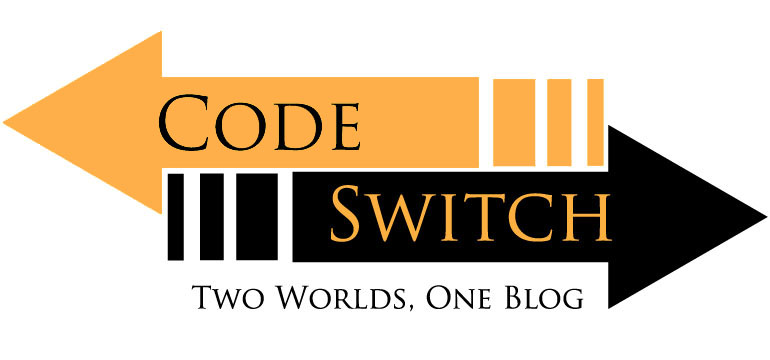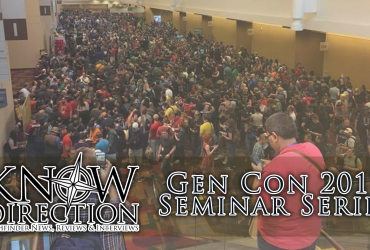Hello, my name is James and welcome to Code/Switch. Today I want to talk about the consistency of rules in fictional settings. By rules I don’t necessarily mean nitty-gritty mechanics, but I do mean predictability and the ability to reproduce consequences for actions.
When you throw a dodgeball at a wall, it bounces back. It loses some energy and comes back at a lower height than when you threw it, but it bounces back. You can do this all day and the result will be the same. If you were on the International Space Station and threw the same dodgeball, it’d hit the wall and come back. On the Space Station you’d catch it roughly at the height you threw it at instead of lower like on Earth, but the result would be consistent and repeatable. If you were to reproduce this experiment on Golarion or in the Starfinder setting, you’d expect similar results because those settings are linked with Earth rules like gravity, conservation of energy, etc.
In fictional settings you’ll see new or alternate rules for things that may or may not exist on Earth. For example if you had the Ricochet Toss feat and were throwing the same dodgeball at a person, you’d expect, no matter how unlikely that the ball would bounce its way back into your hands with enough time to throw it again if you had the ability. It would do this in space, underwater, through fire, and on any day that ends in “y”. This feat is a rule that determines how the world works.
Why is this important? The believability of a fictional setting hinges on a principal called “The Suspension of Disbelief”. In short, it’s the willingness of a person to ignore faults or inconsistencies in actions or consequences to preserve the overall enjoyment. It’s why you enjoy the Lord of the Rings even though those Eagles could have made the journey easier. Maybe it seemed against the Eagles nature to help, maybe the group was too heavy, maybe the Eye of Sauron is an anti-air railgun. Regardless of what you thought to make you suspend your disbelief, it happened and it allowed you to enjoy the films. If you didn’t think it was excusable to gloss over those Eagles, then the scenario would have broken your Suspension of Disbelief in turn hindering your ability to enjoy the story.
This is important to roleplaying games like Pathfinder because the Suspension of Disbelief in fictional setting expands or shrinks depending on what rules the worlds choose to follow. For example, you’re a cool rogue and your trapspotting picks up a magical trap behind a door. You go and disable it, your ability works and the rules of the world are reinforced. Now if you go to that same door and you don’t detect the trap, you’re gonna be miffed. You were taught that this was something you could do!
There’s three ways a setting can go about this and one is much more easily able to keep the Suspension of Disbelief intact. The first way is to include in the rules that some traps are harder to find and players are given ways to improve their ability to find traps. This is reflected in Pathfinders current rules and feels pretty good. The second way is the “Ugh I Guess” approach because when it happens to you, you utter “Ugh I Guess”. This would be the rogue missing the trap and having magic harm ‘em. The rogue will cry “But I find magical traps!” The GM will then go “The trap wasn’t magical, it was physical, and the physical action triggered the magic when it went off.” See? It doesn’t feel good but at least it tries to justify screwing you. The last way is the worst. The last way would be to have the rogue not detect the trap and trigger it. The rogue will protest “But I detect magical traps!” and the GM going “Well you had no chance of finding this one.”
This feels real bad; the ability suddenly doesn’t work when it’s most inconvenient for you. The rules of when it won’t work aren’t apparent and it’ll feel like your ability will cut off at random. Your sense that this world is fair is broken and with it is the Suspension of Disbelief. Your ability to find traps if you’re good enough has become “you can find the traps if the GM wants you to”. While you can try to write this off as a fantasy world being cruel and coy, it doesn’t make sense in the Earth-like rules presented by the setting where trap spotting is a skill that can be learned and improved upon. If you are a professional dodgeballer and you throw that dodgeball and miss, if it missed for any other reason besides you or your opponent you’d probably have your desire to play dodgeball diminished. Keeping these rules intact are paramount to a RPG as the concept as a whole pretty heavily leans on presenting you a world with rules that make sense as part of your enjoyment.
This is not necessarily a just in game concept, things GMs or players do out of character can impact the enjoyment of other people at the table. If you play a genocidal character that kills every fey on sight and suddenly start letting fey live with no rhyme or reason, it makes every fey you kill a dilemma and it can make your fellow players feel like you’ll only kill fey if it somehow screws with their characters or roleplaying. On the GM side if you allow hero points and allow players to roll their own saves, then suddenly start rolling saves they seem to always fail, you’re players are going to feel like their choices don’t mean anything. Consistency of rules in the metagame is just as important as consistency of game rules.
Starfinder has gotten off to a good start in establishing how the rules in the setting work. One of the bits I’m most pleased about is the timing to get to places when travelling through the drift. Instead of making you take a length of cord and running it over a map, Starfinder simplifies it by just making it a random range. It’s reasonable too, for short trips its 1D6 days, for really far travels its 5D6 days, and most importantly to me, drift travel to Absalom Station always takes 1D6 days due to the Starstone. This system is simple, but it allows your players to race around space in a simple, concrete way.
I want to juxtapose this elegant system to Game of Thrones. I’m going to avoid spoilers that matter, but it involves dragons. The world of Game of Thrones is a medieval fantasy setting that mostly mirrors Earth. The laws of gravity, time, space, flora, and fauna of the world are mostly synonymous with Earths. Game of Thrones pigs are the same as Earth pigs, delicious. In the show, ravens are used are the primary form of long distance communication a la carrier pigeon. The show gives no indication that these are anything other than normal Earth ravens. At a point in the show a raven travels over 1,000 miles in under 24 hours, a feat impossible by any Earth raven. This is accentuated by the fact that in earlier seasons certain events are stymied by the time it takes ravens to travel places to deliver news. I’m going to link a spoiler filled video about this topic here, but this broke my Suspension of Disbelief in the Game of Thrones world and it actually hampered my enjoyment for the show because now I feel that time doesn’t matter in the show which throws any predicted order of events into chaos. Don’t be like Game of Thrones to your players be like Starfinder; thoughtful, dependable, and fun.








